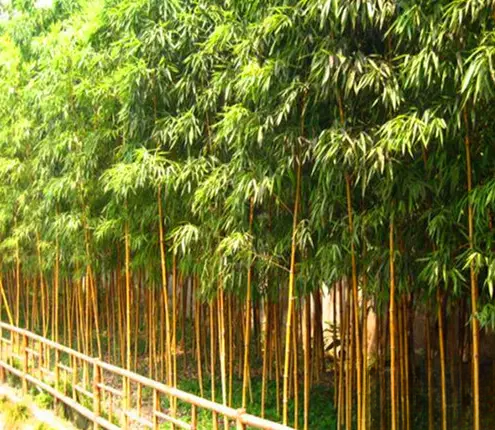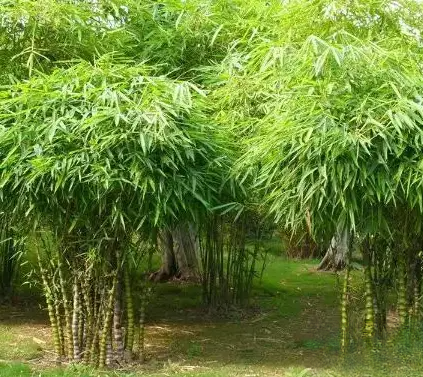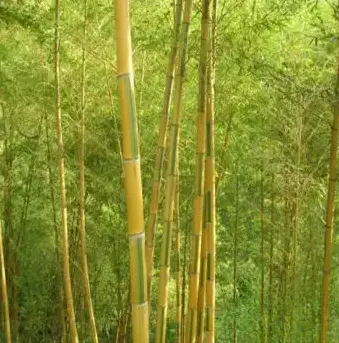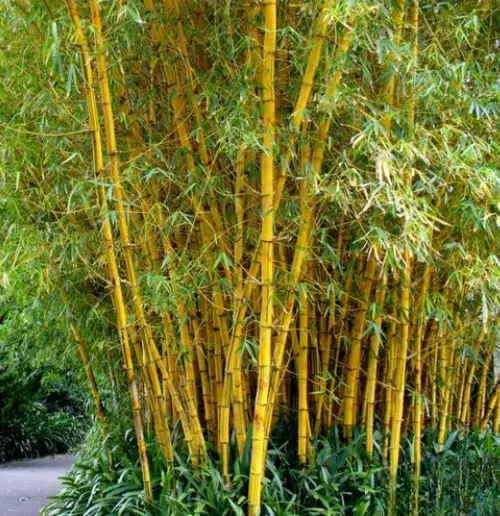Planting techniques for ornamental bamboo in landscaping
1. Construction method of ornamental bamboo landscaping :
1. For a bamboo forest landscape, plant 100 to 300 bamboos per acre.
2. Bamboo variety gardens can plant 10 to 50 trees.
3. For small gardens, 5 to 20 bamboo trees are suitable for ornamental bamboo landscapes.

2. Land preparation method:
The soil should be prepared in the shape of a hole, 30-40 cm deep and 1 meter square. Alternatively, a flower pot with a diameter of 50-100 cm should be used.
Ornamental Bamboo Cultivation Season: Early spring, February, is the best time to cultivate ornamental bamboo . October to March and June, during the plum season , are also good times for planting trees. Some tight deadline landscaping projects require construction in other seasons, such as midsummer, which requires extensive experience and post-planting management skills.

3. Annual Management:
(1) Management of ornamental bamboo seedlings
1. Intertillage and weeding
Twice a year, from June to August, at a depth of 8 to 10 cm, with weeds rotting as fertilizer
2. Fertilize and cultivate the soil
Because bamboo's underground stems are shallow, soil should be added after weeding to help weeds rot and facilitate their absorption. Insufficient fertilizer will result in poor bamboo growth and premature loss of new green leaves. To ensure healthy bamboo growth each year, nitrogen, phosphorus, potassium, silicon, and organic fertilizers should be applied. About half a pound of compound fertilizer should be used per clump. Adding soil to seedlings not only retains moisture but also strengthens the bamboo against swaying. It's simple and effective.
3. Irrigation and drought relief
Ornamental bamboos prefer warm and humid conditions, and they require abundant water during the shoot growth phase, hence the saying "shoots spring up like bamboo shoots after rain." If drought strikes during the shoot growth phase in a newly planted bamboo forest, watering should be used to combat the drought, ensuring the early and healthy growth of the young trees. In the summer of the year when the ornamental bamboo landscape is being established, severe drought can severely impact the survival rate and growth of the seedlings, so watering is also essential. Watering can be done in the morning and evening, ensuring thorough watering. Place straw around the mother bamboos to retain moisture and reduce temperatures.
4. Pruning and shaping
For new bamboos, in mid-June, you can leave 8-10 branches and remove the upper tips. This will improve the bamboo's resistance to wind and rain and increase its beauty.
5. Thinning
After 3-5 years, some old bamboo stalks can be thinned out to give new bamboos ample space to spread their branches and take shape.

(2) Management of bamboo landscape
1. Intertillage and weeding
Once or twice a year, from June to September, at a depth of 8 to 10 cm, with weeds rotting as fertilizer
2. Fertilization
To make the bamboo leaves dark green, apply a small amount of compound fertilizer, 10 to 20 kilograms per mu.
3. Irrigation to combat drought
During the dry season in midsummer, bamboo is prone to water shortage and its leaves lose their green color and turn yellow, so it needs to be watered in the morning and evening to keep them moist.
4. Pruning and shaping
For new bamboos, in mid-June, you can leave 8-10 branches and remove the upper tips. This will improve the bamboo's resistance to wind and rain and increase its beauty.
5. Thinning
Thin out some old bamboo stalks to allow new bamboos more space to grow and shape, improve ventilation and light in the forest, and reduce the risk of pests and diseases. This should be done in late May or early June each year. It can also be done in autumn and winter.
